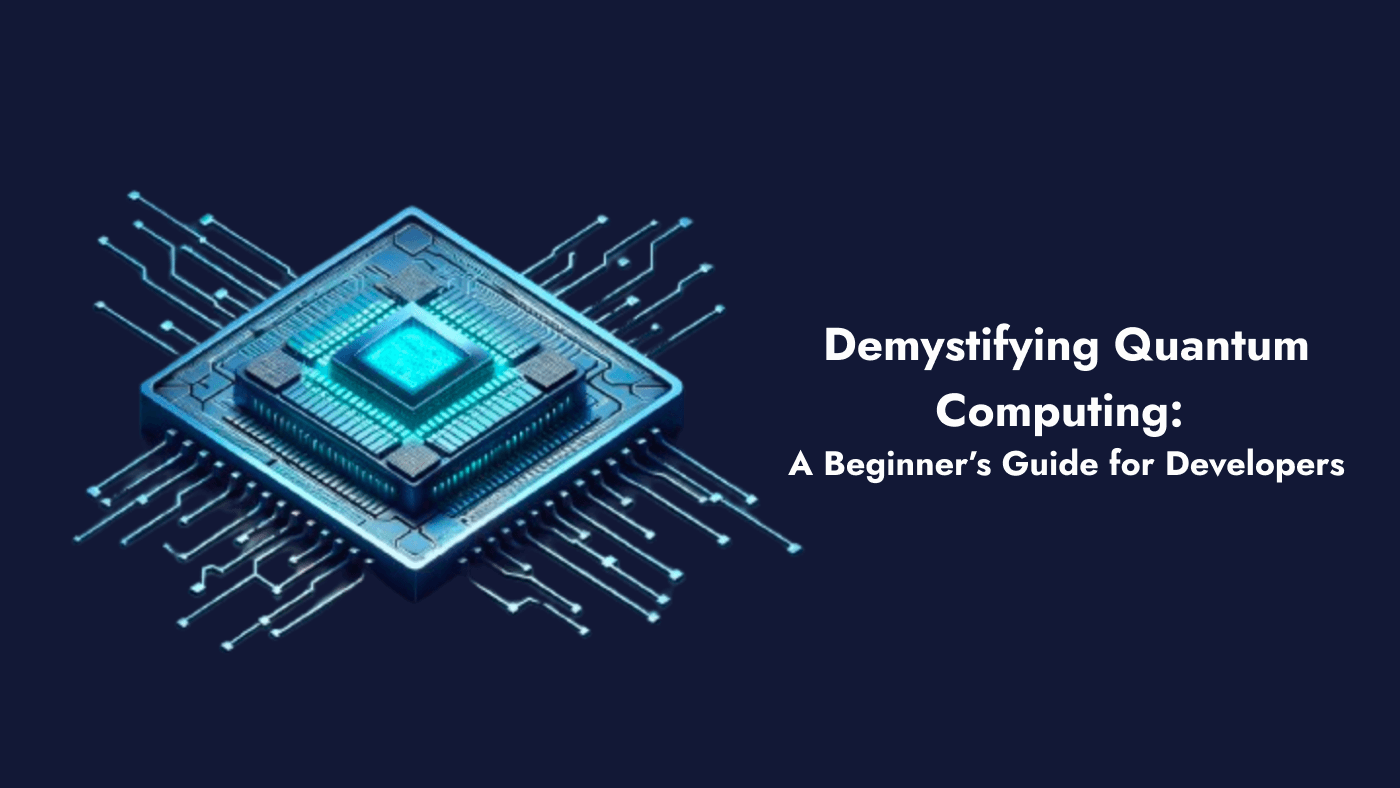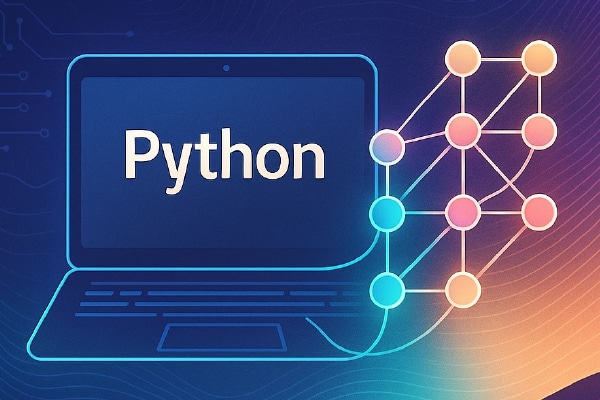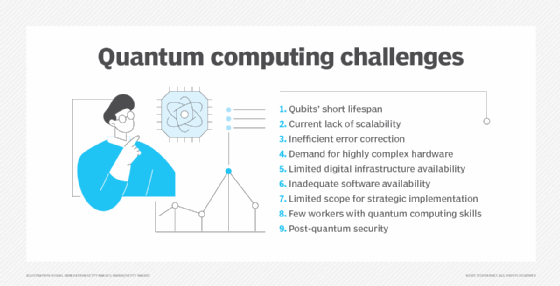Introduction: A New Computing Paradigm

The transition from classical to quantum computing represents a fundamental shift in how information is processed[13]. Classical computers use bits, which can be either a 0 or a 1, but quantum computers use quantum bits, or qubits[8]. A key difference is that qubits can exist in a combination of 0 and 1 simultaneously, a property known as superposition[8]. Additionally, multiple qubits can become entangled, meaning their states are linked; measuring one instantly correlates with the state of the other, regardless of distance[8]. This allows quantum computers to process a vast amount of possibilities concurrently, offering the potential to solve problems currently intractable for classical machines[13]. However, quantum computing is not a replacement for classical computing. Instead, it complements it, with the two working together to solve complex problems[5]. As the field matures, there is a growing need for developers to become 'quantum-ready' and translate industry challenges into problems that quantum computers can solve[8].
Laying the Foundation: Essential Math and Physics

For a classical developer moving into the quantum space, a solid mathematical foundation is crucial[13]. The most important area to refresh is linear algebra, which is essential for understanding quantum states and gates[12][6]. Key topics include vectors, matrices, eigenvalues, and eigenvectors[6]. Complex numbers are also fundamental, as they are used to represent the state of qubits and the quantum gates that perform operations on them[10]. The state of a qubit is described by a pair of complex numbers called probability amplitudes, where the square of their modulus gives the probability of measuring a specific state[14]
The Quantum Developer's Toolkit: SDKs, Languages, and Platforms
A rich ecosystem of tools exists to help developers write, test, and run quantum programs[11]. These can be broadly categorized into Software Development Kits (SDKs), quantum programming languages, and cloud platforms[2].
SDKs and Languages: A Quantum Software Development Kit (SDK) is a tool for developing quantum algorithms for quantum computers or simulators[1]. Many are open-source and allow the use of classical languages like Python[1]. Popular SDKs include:
* Qiskit: An open-source framework from IBM, Qiskit uses Python and allows users to design quantum circuits and run experiments on IBM's quantum processors or simulators[11].
* Cirq: Developed by Google, Cirq is a Python library for creating, editing, and running quantum circuits on simulators and quantum hardware[2].
* Q# and the Quantum Development Kit (QDK): Q# is a domain-specific language from Microsoft tailored for quantum programming, integrated with the QDK[2].
* PennyLane: An open-source library from Xanadu that integrates with classical machine learning tools[15].
Other notable tools include PyQuil from Rigetti, Forest, and Yao.jl[11][11].
Cloud Platforms and Simulators: Developers can access real quantum hardware through the cloud[6]. Platforms like IBM Quantum Experience, AWS Braket, and Microsoft Azure Quantum provide access to various quantum computers[11][7]. For development and testing without needing hardware access, quantum simulators are invaluable[11]. These are software tools running on classical computers that mimic the behavior of a quantum computer[14]. Examples include IBM's Aer (part of Qiskit) and simulators integrated into Cirq and the QDK[11].
Your Transition Roadmap: A Step-by-Step Guide

Transitioning into quantum development can be a structured process. A general workflow involves several logical steps:
1. Problem Formulation: Define the problem and determine if it is suitable for a quantum solution, as some tasks are more efficiently handled by classical computers[4].
2. Algorithm Selection: Choose an appropriate quantum algorithm from the growing library of options designed for tasks like optimization, simulation, or machine learning[4].
3. Implementation: Translate the algorithm into code using a quantum programming language or platform.
4. Execution and Analysis: Run the program on a simulator or a real quantum computer and analyze the results. Since quantum computing is probabilistic, multiple runs may be needed[4].
For self-study, a variety of resources are available. Structured online courses from platforms like Coursera and edX, or from companies like IBM and SpinQ, can guide learners from fundamental principles to advanced applications[13][6]. The textbook Quantum Computation and Quantum Information by Nielsen and Chuang is a frequently recommended resource in the field[12]. Interactive tools like the PennyLane Codebook and the open-source Qiskit textbook offer a coder-friendly way to learn the basics[12][5].
A developer's journey can be rapid. One developer documented their transition starting in September 2021 with the realization they wanted a new career path, followed by reaching out for academic references in October. By February 2022, they had received and accepted a job offer at a quantum company, starting on their cloud team[12]. This highlights that a determined individual can enter the industry in under a year.
Navigating the Quantum Realm: Common Challenges and Pitfalls
The transition to quantum development involves overcoming both conceptual and practical hurdles. One of the hardest parts for classical developers to get used to is that the rules of quantum mechanics are very different[5]. Quantum programs are probabilistic, meaning the output comes from repeated measurements of qubits[2]. Furthermore, the act of measuring a quantum state to understand it effectively destroys the quantum information, a stark contrast to classical systems[5].
A significant technical challenge is quantum noise[5]. Qubits are extremely sensitive to their environment, and interactions can cause them to lose their quantum state, leading to errors in computation[13]. This requires developers to learn new error mitigation techniques[5].
From a learning perspective, the sheer amount of information can feel overwhelming[12]. It's important to find a balance between catching up on foundational knowledge and keeping up with the latest discoveries[12]. A common pitfall for newcomers is approaching experts without a clear plan or specific questions. One developer recounted organizing a call with a prominent professor without knowing what to ask, making the interaction less productive than it could have been[12]. Having a specific goal is crucial when seeking guidance.
Joining the Community: Open-Source and Collaboration

Engaging with the quantum community is a powerful way to learn and contribute. The field is highly collaborative, with many opportunities for involvement[12]. Open-source projects are central to the ecosystem, with most major SDKs like Qiskit, Cirq, and ProjectQ being developed with contributions from a global community[11]. Contributing to these projects is an excellent way to gain practical experience[12].
Quantum hackathons and challenges provide a fun, competitive environment to solve real-world problems and gain hands-on skills[13]. The IBM Quantum Challenge, for instance, offers a series of exercises designed to help developers understand how quantum programming works by building and running circuits on real quantum systems[5]. Community platforms such as Discourse, Discord, Slack, GitHub, and Stack Exchange are also valuable for sharing ideas, asking questions, and fostering collaborations[7]. The Unitary Fund, for example, runs a Discord server devoted to quantum computing[12]. By participating in these activities, developers can become part of the conversation and accelerate their journey into the quantum industry[12].
Get more accurate answers with Super Pandi, upload files, personalized discovery feed, save searches and contribute to the PandiPedia.
Let's look at alternatives:
- Modify the query.
- Start a new thread.
- Remove sources (if manually added).




